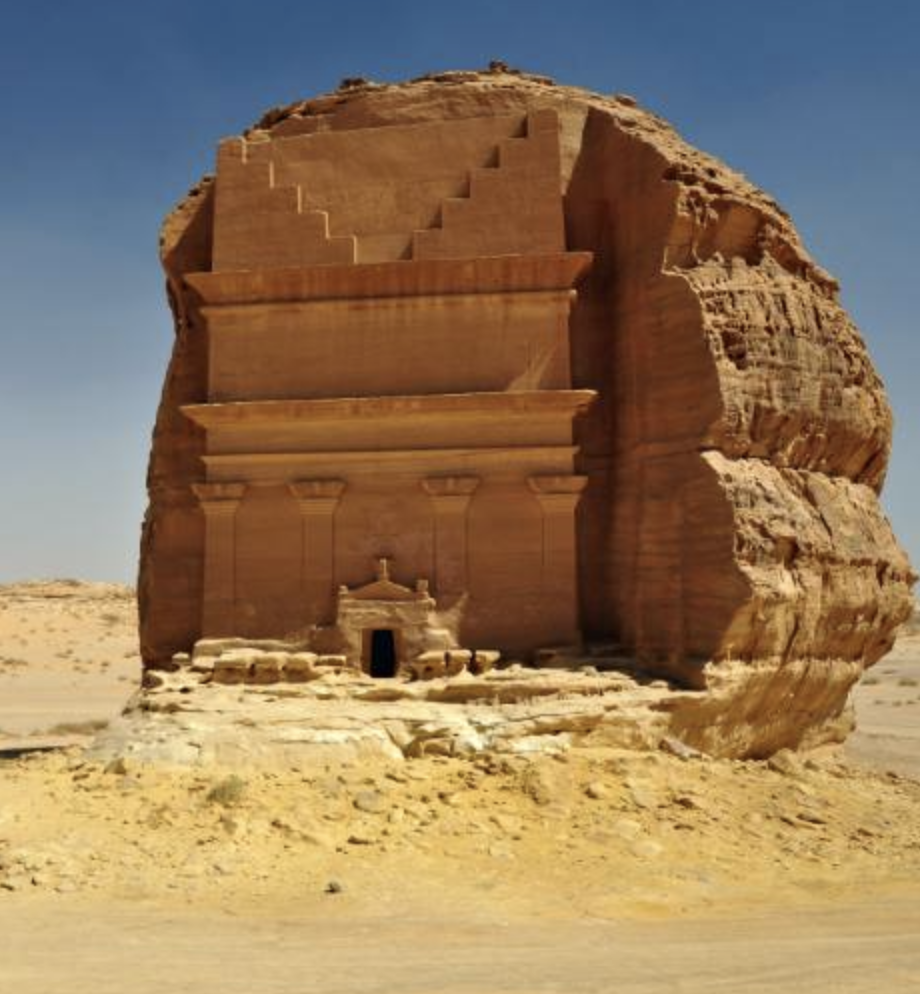Aramco Expats, an online blog that is a resource for current and former Saudi Aramco expatriates and their families, recently published a series of excellent blog posts on the seven wonders of the Arabia – the best heritage sites and historical places in the Kingdom.
The blog noted that this list was, in fact, the seven runners up to the consensus number one wonder of Arabia: the Saudi people themselves.
Tourism, entertainment, and boosting domestic and inbound international travel all form a key part of the Kingdom’s push to diversify its economy away from oil revenues. Saudi Arabia wants to open itself up to the world and put on display how the Arabian peninsula has played an important role in the story of humanity.

In the first of the wonders of Arabia, Aramcoexpats.com chose Madain Saleh, an archaeological site located in Al-Ula, in the Madinah Region in the Hejaz, Saudi Arabia.
In selecting the wonders, AramcoExpats.com said, “we opted to follow the lead of UNESCO, who in concert with the Saudi government has recognized three historical sites in the Kingdom as World Heritage Sites and nominated three more for consideration. That gave us six ‘Wonders’ to work with, leaving it up to us to decide on a seventh. We have opted not to rate them against each other. Instead, we shall treat them in chronological order based on when they were chosen or nominated for inscribing on UNESCO’s WHS list. We’ll leave it to you, our readers, to decide for yourselves who’s Number One.”
Over the next seven weeks, SUSTG will be featuring the top seven wonders of Arabia as selected and featured by AramcoExpats.com.
In the first of the wonders of Arabia, Aramcoexpats.com chose Madain Saleh, an archaeological site located in Al-Ula, in the Madinah Region in the Hejaz, Saudi Arabia.
[Click here to read the full post on Madain Saleh from AramcoExpats.com]
“We begin our seven-stop tour of the Arabian Peninsula then with a visit to a Nabataean desert city with monumental buildings carved from rock which has often been compared with Petra. Located 300 miles south-southeast of Jordan’s signature attraction, not far from al-Ula in the Al Madinah Region of the Kingdom, Madâin Sâlih boasts 131 stunning rock tombs, a wealth of intricate ornamental carvings, and a Siq-like narrow canyon of its own.
“In 2008, when Madâin Sâlih was named a World Heritage Site, the first site in the Kingdom to be so recognized, UNESCO had this to say about their choice:
“The Archaeological Site of Al-Hijr (Madâin Sâlih) is the first World Heritage property to be inscribed in Saudi Arabia. Formerly known as Hegra it is the largest conserved site of the civilization of the Nabataeans south of Petra in Jordan. It features well-preserved monumental tombs with decorated façades dating from the 1st century BC to the 1st century AD. The site also features some 50 inscriptions of the pre-Nabataean period and some cave drawings. Al-Hijr bears a unique testimony to Nabataean civilization. With its 111 monumental tombs, 94 of which are decorated, and water wells, the site is an outstanding example of the Nabataeans’ architectural accomplishment and hydraulic expertise.”
“….Madâin Sâlih has often been compared with Petra for obvious reasons, beginning with their monumental rock tombs. Yet, it differs from its Jordanian cousin in significant ways, in part because of the “highly favourable climate conditions” pointed to by UNESCO.”
“For over two centuries, spanning the dawn of the Common Era, Madâin Sâlih served as a major staging post on the overland trade route linking southern Arabia with the Mediterranean basin. Caravans laden with precious goods like spices and incense regularly passed through its precincts. Less recognized today are the Nabataeans’ related maritime activities. Those activities had a direct effect on caravan traffic passing through Madâin Sâlih. A primary overland trade route linked it directly to the ‘lost’ port of Leuce Come.”
[Click here to read the full post on Madain Saleh from AramcoExpats.com]









